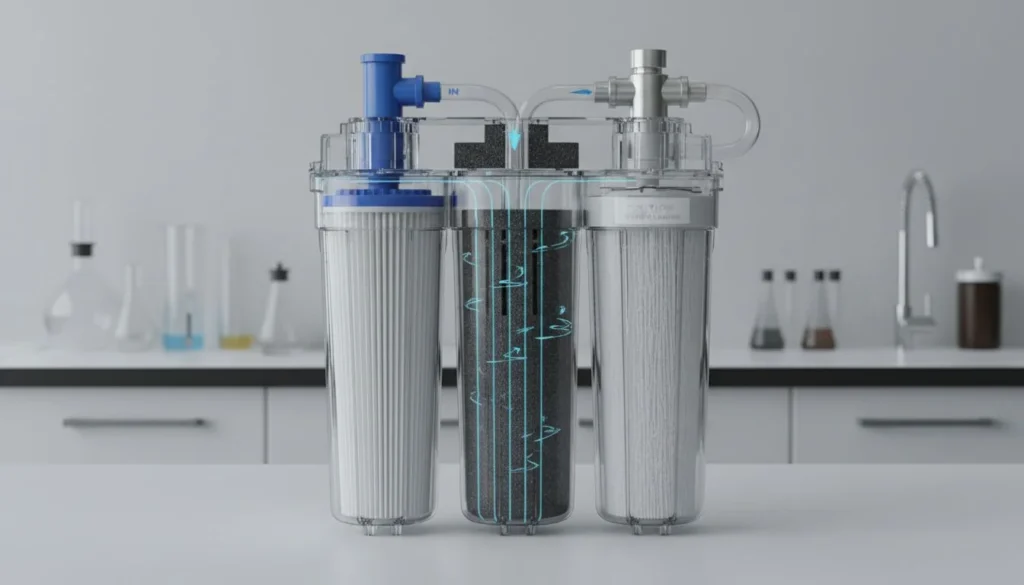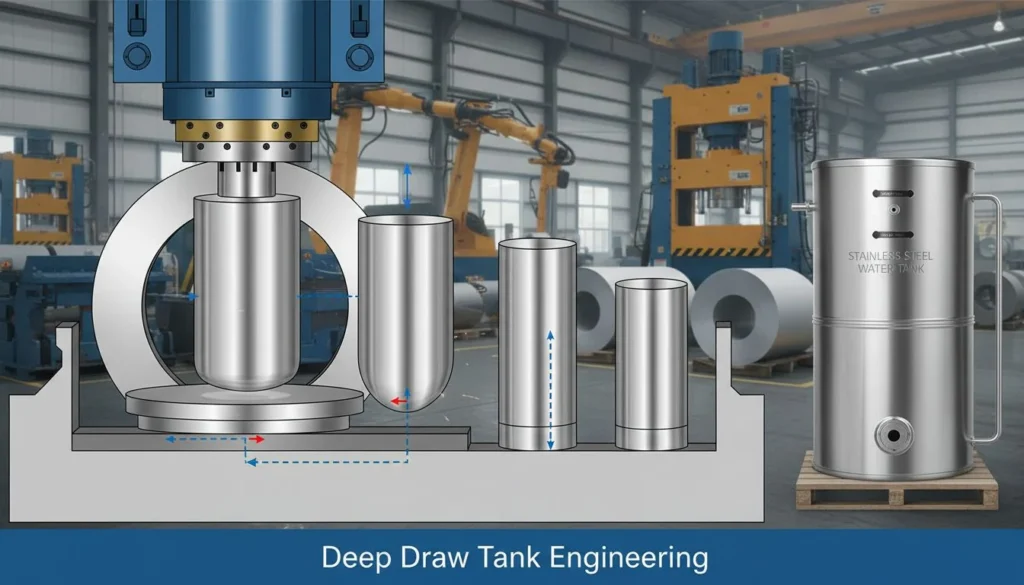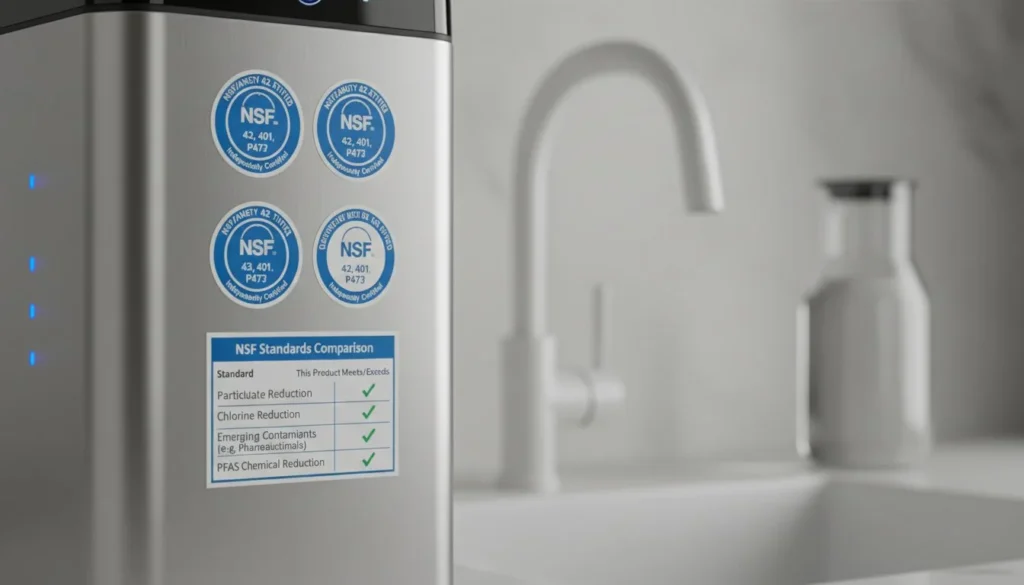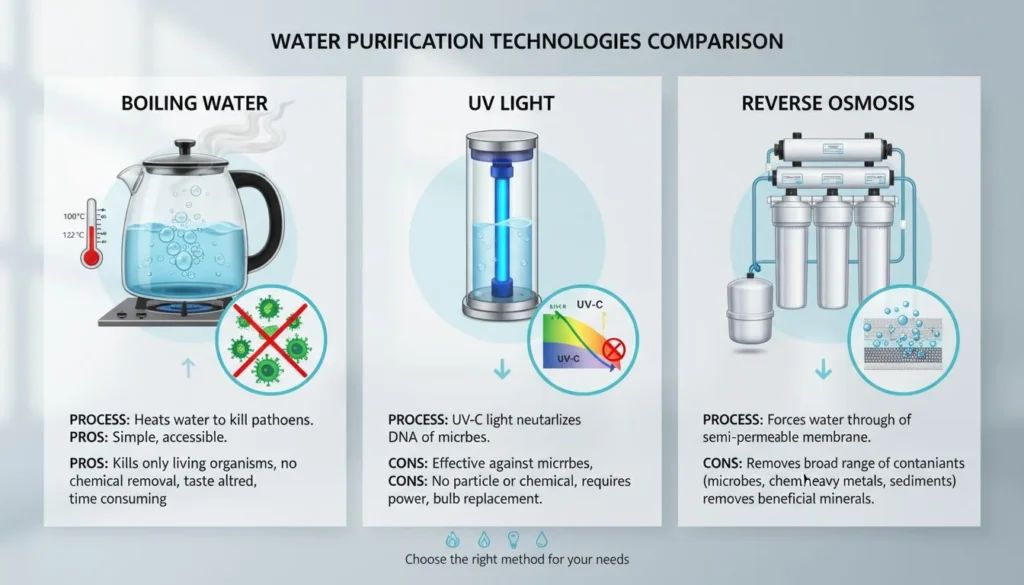
استكشاف عالم التجارة العالمية المتغير باستمرار هو مغامرتي اليومية. الرسوم الجمركية على الواردات الصينية آخذة في الارتفاع. وهذا أمر مهم.
في مواجهة تحديات التعريفات الجمركية المرتفعة على البضائع الصينية، اكتشفت أن تنويع سلسلة التوريد الخاصة بي أمر بالغ الأهمية. فأنا أستكشف خيارات تصنيع مختلفة في فيتنام وتايلاند والمكسيك. وتمنحني حماية حقوق الملكية الفكرية مرونة مهمة للغاية. يمكنني نقل الإنتاج عند الضرورة.
هذه الخطوات الأولى تؤهلني للتعامل مع ضغوط التعريفة الجمركية. لقد اكتشفت أن التعمق في تحسين سلسلة التوريد أمر حيوي حقًا. لقد أدى إيجاد استراتيجيات مختلفة إلى حماية الشؤون المالية لشركتي والحفاظ على سير العمليات. وهذا أمر مهم في هذه الأوقات التي لا يمكن التنبؤ بها. كل خطوة إلى الأمام ربما تقوي مقاومتي للتغيرات الاقتصادية.
تنويع سلاسل التوريد يقلل من تأثير التعريفة الجمركية.صحيح
يمكن أن يؤدي استكشاف مواقع بديلة مثل فيتنام إلى تقليل الاعتماد على الصين.
حقوق الملكية الفكرية لا علاقة لها باستراتيجية التعريفة الجمركية.خطأ
يتيح تأمين حقوق الملكية الفكرية المرونة في نقل الإنتاج، مما يساعد على وضع استراتيجية.
كيف يمكن لتنويع مصادر التصنيع أن يفيد سلسلة التوريد الخاصة بك؟
هل فكرت يوماً لماذا تبدو سلسلة التوريد الخاصة بك غير مستقرة كبرج جينغا الذي يوشك على السقوط؟ قد يكون تغيير الأماكن التي تصنع فيها منتجاتك هو الحل الذي تحتاجه حقاً. ربما يكون تنويع المنشأ مهم جداً.
استخدام بلدان مختلفة للتصنيع يعزز سلسلة التوريد الخاصة بك. وهذا يقلل من الاعتماد على مصدر واحد. ومن المحتمل جداً أن يساعد في التعامل مع المخاطر السياسية. تعمل هذه الاستراتيجية على تحسين القدرة على التكيف مع التغيرات في السوق.
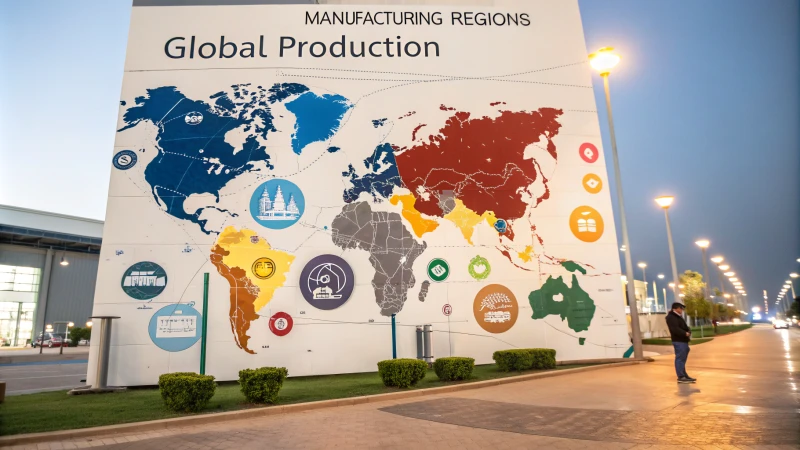
التخفيف من المخاطر الجيوسياسية
أتذكر أنني كنت أشاهد الأخبار وأشعر بالقلق بشأن المحادثات التجارية. فقد تؤثر هذه المناقشات على عملي بأكمله. عندها أدركت أهمية وجود مصانع في بلدان مختلفة. فهو بمثابة شبكة أمان وحماية من المشاكل السياسية. كما أن استراتيجية الصين + 11 مثال جيد حقًا. ساعدني هذا النهج على الشعور بالهدوء لأنني لم أكن أعتمد على منطقة واحدة فقط.
زيادة المرونة والاستجابة
يمكن أن تزيد الرسوم الجمركية فجأة بين عشية وضحاها. قد يشعر الكثيرون بالذعر، ولكن ليس إذا كان لديهم مواقع تصنيع متعددة. أثبت وجود خيارات في المكسيك أنه مفيد بالنسبة لي. يمكنني إنتاج المزيد هناك بسرعة للتعامل مع التحديات في أماكن أخرى.
تقليل الاعتماد على مورد واحد إلى أدنى حد ممكن
ذات مرة، فشل مورد رئيسي في التسليم بسبب مشاكل غير متوقعة. علمني هذا الموقف الصعب قيمة توزيع المخاطر. والآن، أعمل مع المصنعين في مجالات مختلفة من خلال الشراكة مع الشركات المصنعة2. إذا واجه أحد الموردين مشاكل، يمكن للموردين الآخرين الحفاظ على سير الإنتاج بسلاسة.
حماية الملكية الفكرية (IP)
وكثيراً ما كانت المخاوف بشأن فقدان السيطرة على إبداعاتي تقلقني. وكانت حماية ملكيتي الفكرية في جميع مواقع التصنيع أمراً ضرورياً. فقد أتاحت لي هذه الحماية نقل الإنتاج دون الإضرار بجودة منتجي أو صورة علامتي التجارية.
العثور على شركاء موثوقين على مستوى العالم
شعرت أن البحث عن شركاء جديرين بالثقة كان يمثل تحدياً كبيراً في بعض الأحيان. وقد حسّن الخبراء أو الاستشاريون المحليون وضعي بشكل كبير من خلال المساعدة في العثور على شركاء موثوقين وضمان مراقبة الجودة. وقد أتاحت أماكن مثل فيتنام وتايلاند فرصاً جديدة، في حين أن وجود فريق سلسلة التوريد المحلي3 في الصين عمليات مبسطة في الصين وحافظت على معايير عالية.
| البلد | المزايا الرئيسية |
|---|---|
| فيتنام | عمالة فعالة من حيث التكلفة، وسياسات مستقرة |
| تايلاند | بنية تحتية راسخة |
| المكسيك | القرب من أسواق أمريكا الشمالية |
| كمبوديا | فرص الأسواق الناشئة |
إن تنويع أماكن التصنيع لا يحمي أعمالي فحسب، بل يتيح لي فرصاً للنمو - الأمر أشبه بامتلاك مجموعة أدوات كاملة جداً معدة لأي تحدٍ يطرأ في العالم.
تنويع الأصول يخفف من المخاطر الجيوسياسية.صحيح
تقلل أصول التصنيع المتعددة من تأثير عدم الاستقرار السياسي.
الاعتماد على مورد واحد يعزز مرونة سلسلة التوريد.خطأ
الاعتماد على مورد واحد يزيد من المخاطر وليس المرونة.
ما أهمية الملكية الفكرية عند نقل الإنتاج؟
هل فكرت يومًا في سبب أهمية الملكية الفكرية عند تحويل الإنتاج؟ تنطوي الملكية الفكرية على أفكار واختراعات فريدة من نوعها. وهي مهمة جداً لنجاح الشركة. فبدون حمايتها، قد يقوم المنافسون بنسخ الأفكار. وهذا يقلل من استفادة المبدع الأصلي. إن حماية الملكية الفكرية تحافظ على الإبداع والابتكار. هذه الخطوة بالغة الأهمية لأنها تساعد الشركة على الازدهار والنمو. تذكر أن الأصالة تأتي من الأفكار المحمية.
الملكية الفكرية أمر بالغ الأهمية في نقل الإنتاج. فهي تحمي الابتكارات وتحافظ على ملكية التكنولوجيات الخاصة. وتصبح عمليات الانتقال عبر الحدود أكثر سلاسة. تساعد الإدارة السليمة للملكية الفكرية في الحفاظ على التنافسية. كما يتم الحفاظ على الامتثال.

حماية الابتكارات والتقنيات الفريدة
عندما فكرت لأول مرة في نقل الإنتاج، أدركت أن حماية الملكية الفكرية4 كانت مهمة للغاية. تخيل ابتكار شيء مميز والمخاطرة بنسخه مباشرة بعد نقل التصنيع إلى الخارج. يجب أن تظل براءات الاختراع والعلامات التجارية والأسرار التجارية قائمة للحفاظ على ابتكاراتنا خاصة بنا. هذه الحصرية مهمة جداً عند دخول أسواق جديدة أو العمل مع شركاء مختلفين.
الملكية والتحكم
يتيح لنا امتلاك أصولنا الفكرية الحفاظ على التحكم في عمليات الإنتاج، أينما كانت. تتيح لنا محفظة الملكية الفكرية القوية التفاوض على صفقات أفضل مع الشركاء. التقنيات الحاصلة على براءة اختراع مثل هيسو إير5 حماية تصميماتنا وعملياتنا الفريدة. وتمنحنا هذه الحماية حرية اختيار مواقع الإنتاج دون خوف من فقدان ميزتنا.
| أسبكت | المزايا |
|---|---|
| براءات الاختراع | يمنع الاستخدام غير المصرح به للابتكارات |
| العلامات التجارية | يحمي هوية العلامة التجارية عبر الأسواق |
| الأسرار التجارية | حماية المعلومات التجارية السرية |
فهم الأطر القانونية
لكل بلد قواعد لحماية الملكية الفكرية. فهم هذه القواعد الأطر القانونية6 مهم عند نقل الإنتاج. لا يتعلق الأمر فقط بمعرفة حقوقنا؛ بل يجب علينا أيضًا إنفاذها للحد من مخاطر التعدي أو فقدان البيانات.
دعم عمليات الانتقال السلس
تعد الإدارة الجيدة لعنوان IP بمثابة خريطة موثوقة للمسارات غير المعروفة. فهي تساعد على ضمان انتقالات أكثر سلاسة عند نقل الإنتاج. تمنع حقوق الملكية والاستخدام المحددة بوضوح النزاعات القانونية، مما يسمح لنا بالتركيز على تحسين استراتيجيات سلسلة التوريد. على سبيل المثال، تدعم اتفاقية ملكية فكرية جيدة التنظيم استراتيجية الصين + 17. وهذا يمكّننا من تنويع التصنيع مع حماية الابتكارات.
يساعد فهم الملكية الفكرية ونقل الإنتاج في الحفاظ على ميزتنا التنافسية في الاقتصادات العالمية المتغيرة. تعني استراتيجيات الملكية الفكرية القوية أن شركات مثل HisoAir تواصل الابتكار وتقديم حلول عالية الجودة على مستوى العالم.
حماية الملكية الفكرية أمر بالغ الأهمية لنقل الإنتاج.صحيح
تحمي الملكية الفكرية الابتكارات، وتضمن الحصرية عند دخول أسواق جديدة.
تحمي العلامات التجارية تقنيات الشركة فقط.خطأ
تحمي العلامات التجارية هوية العلامة التجارية، وليس التقنيات، عبر الأسواق.
لماذا يجب على الشركات الحديثة التفكير في استراتيجية الصين + 1؟
تخيل الاستيقاظ على مشكلة أخرى في سلسلة التوريد العالمية. ما هي خطتك الاحتياطية؟
تعمل استراتيجية الصين + 1 على تنويع التصنيع خارج الصين. ويقلل هذا النهج من المخاطر الناجمة عن الاعتماد المفرط على بلد واحد. تنشر الشركات عملياتها. تزيد هذه الاستراتيجية من قوة سلسلة التوريد. تساعد في حل مشاكل التعريفة الجمركية. كما تدخل الشركات أسواقاً جديدة. هذه الخطوة مهمة جداً في عالم الأعمال اليوم.
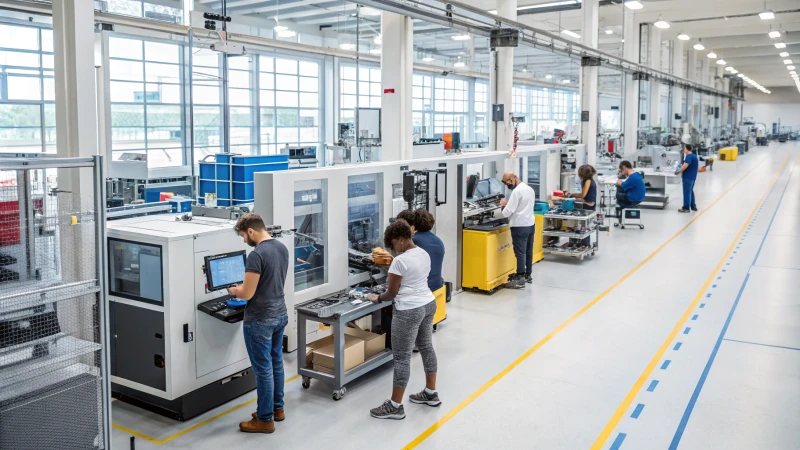
فهم استراتيجية الصين + 1
إن استراتيجية الصين + 1 هو في الأساس عدم وضع كل بيضك في سلة واحدة. إنه ينطوي على توريد وتصنيع المنتجات ليس فقط في الصين8ولكن أيضًا في بلدان أخرى. وهذا يساعد الشركات على تقليل المخاطر المرتبطة باعتمادها على سوق واحدة.
لماذا تتبنى الشركات الصين+1 الشركات التي تتبنى الصين+1
هناك العديد من الأسباب المقنعة التي تجعل الشركات تتجه نحو استراتيجية الصين + 1:
- مخاوف التعريفة الجمركية والحرب التجارية: أدت التوترات التجارية المستمرة بين الاقتصادات الكبرى إلى زيادة الرسوم الجمركية على السلع الصينية، مما دفع الشركات إلى تنويع منتجاتها.
- اضطرابات سلسلة التوريد: سلطت أحداث مثل جائحة كوفيد-19 الضوء على نقاط الضعف في الاعتماد على التصنيع الصيني فقط.
- ارتفاع تكاليف العمالة: مع ارتفاع الأجور في الصين، تبحث الشركات عن أسواق عمل أكثر فعالية من حيث التكلفة.
وجهات الصين+1 الشهيرة
خلال بحثي عن البدائل، اكتشفت العديد من الأماكن الواعدة. تركز العديد من الشركات الآن على هذه المجالات:
| البلد | المزايا |
|---|---|
| فيتنام | القرب من الصين، وانخفاض تكاليف العمالة |
| تايلاند | البنية التحتية الراسخة وسياسات التجارة الحرة |
| المكسيك | مزايا اتفاقية التجارة الحرة لأميركا الشمالية (NAFTA)، بالقرب من السوق الأمريكية |
تنفيذ استراتيجية الصين + 1
1. تقييم الأسواق المحتملة: تحتاج الأسواق الجديدة إلى فحص دقيق. الاستقرار السياسي وتكاليف العمالة و البنية التحتية9 عوامل مهمة يجب أخذها في الاعتبار.
2. حماية الملكية الفكرية (IP): حماية الملكية الفكرية أمر ضروري للغاية عند نقل الإنتاج. وهذا يمكن أن يمنع الانتهاكات المحتملة في الولايات القضائية الجديدة.
3. الحفاظ على علاقات قوية: لا تزال رعاية الشراكات الصينية القائمة مهمة مع توسيع العمليات في أماكن أخرى. التوازن بين المشاريع القديمة والجديدة مهم.
يستغرق تطبيق هذه الاستراتيجية وقتاً طويلاً ويتطلب تخطيطاً دقيقاً واستعداداً للتكيف. أما المكافأة؟ مرونة ومرونة أكبر في عالمنا المضطرب.
تقلل استراتيجية الصين+1 من مخاطر سلسلة التوريد.صحيح
تنويع مواقع التصنيع يخفف من الاعتماد على الصين.
فيتنام خيار شائع لاستراتيجية الصين+1.صحيح
توفر فيتنام تكاليف عمالة أقل وقربها من الصين.
هل شعرت يوماً أن التعريفات الجمركية لغز كبير؟ بالتأكيد أشعر بذلك. قد تكون الشراكات المحلية هي القطعة المهمة التي تجعل كل شيء مناسباً تماماً.
تساعد الشراكات المحلية الشركات على مواجهة مشاكل التعريفة الجمركية من خلال توفير المعرفة الإقليمية وإيجاد موردين جدد وتبسيط عملية النقل. وغالباً ما تسمح هذه الشراكات للشركات بتقاسم التكاليف والوصول إلى أسواق أوسع. كما يسهل التغلب على الحواجز التجارية.

الخبرة الإقليمية
أتذكر المرة الأولى التي واجهت فيها العالم المعقد للتعريفات الدولية. شعرت وكأنني أحاول فهم لغة غريبة. علمتني تلك التجربة مدى قيمة الشركاء المحليين. فهم يتمتعون بمعرفة عميقة بالقواعد الإقليمية واتجاهات السوق، مما يوضح حتى أكثر الهياكل التعريفية إرباكاً. وكان عملي مع أحد المصنّعين الفيتناميين مثالاً جيداً على ذلك؛ فقد كانت رؤيتهم الثاقبة حول الاتفاقيات التجارية لرابطة أمم جنوب شرق آسيا (آسيان) مفيدة جداً وأنقذتنا من العديد من المواقف الصعبة.
بالإضافة إلى ذلك، غالباً ما يكون لهؤلاء الشركاء علاقات قوية مع السلطات المحلية، مما يساعد حقاً عند التعامل مع العقبات البيروقراطية. فالأمر أشبه بوجود صديق يعرف بالضبط مع من يمكن التحدث إليه داخل النظام.
تنوع سلسلة التوريد
تعلمت أن الاعتماد على مورد واحد فقط في الأعمال التجارية أمر محفوف بالمخاطر. تنويع سلاسل التوريد من خلال الشراكات المحلية10 أمر حيوي. إن التوريد من مناطق مثل فيتنام أو المكسيك يدعم استراتيجية الصين + 1، مما يجعلك مستعدًا للتغييرات غير المتوقعة في التعريفة الجمركية.
تقلل هذه الاستراتيجية من الاعتماد على مورد واحد وتوفر خيارات تسعير أكثر تنافسية، وهو أمر مفيد دائماً.
| البلد | الميزة المحتملة |
|---|---|
| فيتنام | التعريفات الجمركية المواتية في أسواق الآسيان |
| المكسيك | الحصول على مزايا اتفاقية التجارة الحرة لأميركا الشمالية/اتفاقية التجارة الحرة لأمريكا الشمالية |
| تايلاند | قاعدة صناعية وبنية تحتية قوية |
تحسين الخدمات اللوجستية والعمليات
يمكن للشراكات المحلية تحويل الخدمات اللوجستية من خلال استخدام البنية التحتية الحالية للشريك، مما يجعل النقل أكثر كفاءة، وهو أمر بالغ الأهمية للبضائع القابلة للتلف أو عمليات التسليم العاجلة.
على سبيل المثال، أتاح لنا العمل مع شريك في تايلاند إمكانية الوصول إلى مراكز لوجستية متقدمة، مما جعل عمليات الاستيراد والتصدير سلسة للغاية.
مزايا تقاسم التكاليف
يمكن أن تفتح مشاركة التكاليف مع الشركاء المحليين أبواباً لاستثمارات لم يكن من الممكن الوصول إليها سابقاً. ويمكن أن يؤدي الاستثمار المشترك في التكنولوجيا أو البنية التحتية إلى خفض النفقات بشكل كبير. لقد رأيتُ كيف أن الاستثمار المشترك في مركز التوزيع المشترك11 خفضت التكاليف اللوجستية بشكل كبير - وهو ما يمثل ارتياحاً مالياً حقيقياً.
توسيع نطاق الوصول إلى الأسواق
إحدى المزايا الرئيسية للشراكات المحلية هي الوصول إلى الأسواق. حيث تساعد الشبكات القائمة وقواعد العملاء على اكتساب الثقة والوصول إلى أسواق جديدة.
على سبيل المثال، يمكن لشريك ذو علاقات جيدة في كمبوديا أن يقدم منتجاتك من خلال قنواته الموثوقة - وكأنك حصلت على مفاتيح مملكة، مما يسرع من دخول السوق والنجاح.
يقوم الشركاء المحليون بتسريع العمليات المتعلقة بالتعريفة الجمركية.صحيح
أقام الشركاء المحليون علاقات راسخة مع السلطات، مما أدى إلى تسريع العمليات.
يؤدي تنويع سلاسل التوريد إلى زيادة مخاطر التعريفة الجمركية.خطأ
يقلل التنويع من التبعية والمخاطر من خلال التوريد من مناطق متعددة.
الخاتمة
للتخفيف من تأثير زيادة التعريفات الجمركية على الواردات الصينية، يجب على الشركات تنويع سلاسل التوريد، وحماية الملكية الفكرية، وإقامة شراكات محلية في بلدان التصنيع البديلة.
-
يساعد فهم استراتيجية الصين + 1 الشركات على التخفيف من المخاطر من خلال استكشاف مواقع تصنيع إضافية خارج الصين. ↩
-
إن اكتشاف شركاء موثوقين يضمن لك جودة متسقة ويمكن أن يحمي سلسلة التوريد الخاصة بك من الاضطرابات غير المتوقعة. ↩
-
يمكن للفريق المحلي سد الفجوات الثقافية واللوجستية وتعزيز الكفاءة والتواصل. ↩
-
يساعد فهم أهمية الملكية الفكرية الشركات على حماية ابتكاراتها على مستوى العالم. ↩
-
اكتشف كيف توفر تقنيات HisoAir الحاصلة على براءة اختراع ميزة تنافسية في مجال تنقية الهواء. ↩
-
استكشف قوانين الملكية الفكرية في مختلف البلدان لضمان امتثال شركتك للقوانين الدولية. ↩
-
تعرّف كيف يمكن لاستراتيجية الصين + 1 أن تعزز مرونة سلسلة التوريد من خلال تنويع مواقع التصنيع. ↩
-
يوفر هذا الرابط نظرة ثاقبة على الآثار الاقتصادية المترتبة على الاعتماد على التصنيع الصيني فقط. ↩
-
يوضح هذا الرابط جاهزية البنية التحتية للأسواق الناشئة المثالية لاستراتيجية الصين+1. ↩
-
اكتشف كيف يمكن أن يؤدي تنويع سلسلة التوريد الخاصة بك من خلال الشراكات المحلية إلى تقليل المخاطر وتقديم مزايا التسعير. ↩
-
تعرّف على المكاسب الناتجة عن الكفاءة من استخدام الأنظمة اللوجستية القائمة لدى شريكك. ↩


